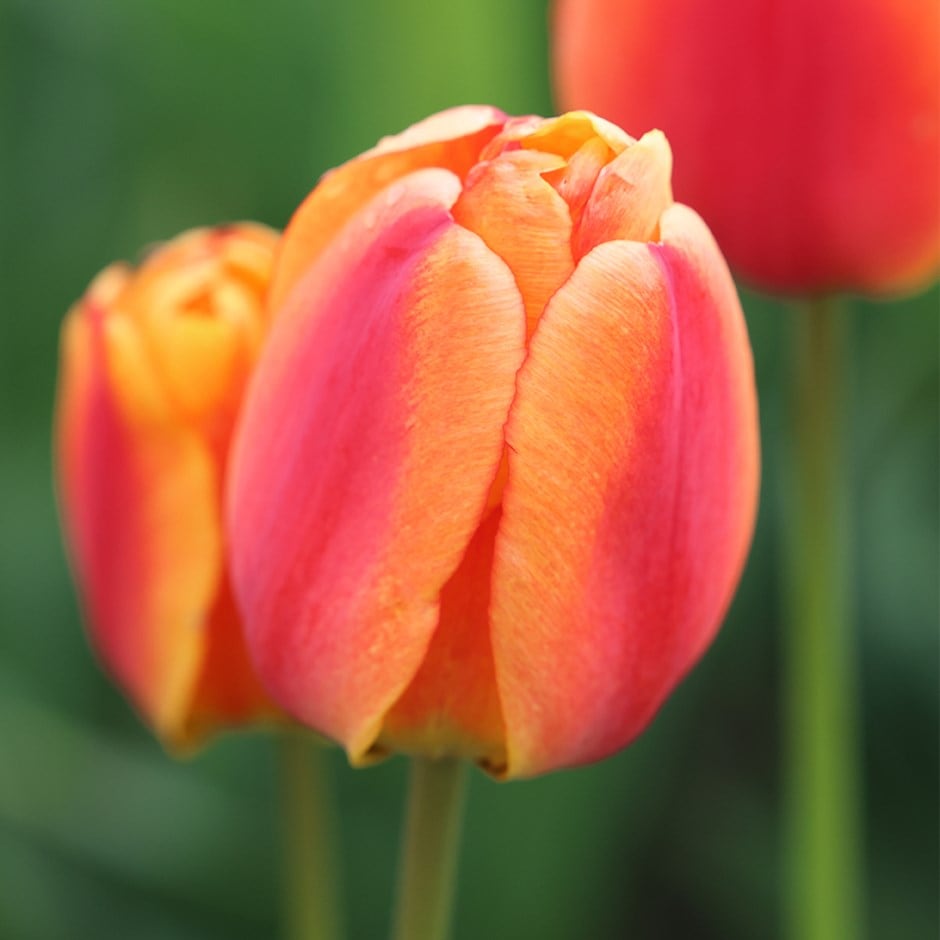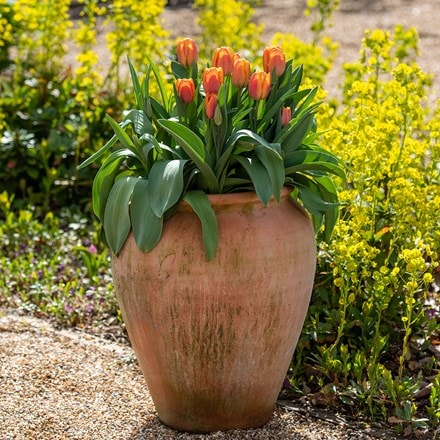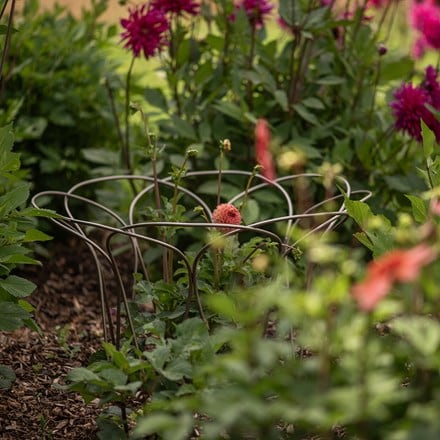Tulipa 'Apeldoorn's Elite'
Darwin hybrid tulip bulbs (syn Apeldoorn Elite)
- 21 × bulbs
- £21.00 £1.00 each
- available to order from summer
- 7 × bulbs
- £7.99 £1.14 each
- available to order from summer
Delivery options
- Bulbs (only) £4.99
- Position: full sun
- Soil: moderately fertile, moist but well-drained soil, or general purpose compost for containers
- Rate of growth: average
- Flowering period: May
- Hardiness: fully hardy
- Bulb Size: 12+
Brightly coloured, cup-shaped blooms with a blend of deep red and orange tones make this Darwin Hybrid tulip a strong focal point in mid-spring. Flowers stand tall on sturdy stems above broad, grey-green foliage and hold their shape well in the garden or as cut flowers.
Tulipa 'Apeldoorn's Elite' is ideal for mass planting in borders, beds or large pots for maximum seasonal impact. Reliable and long-lived, it returns each year when planted in free-draining soil with good sun. Slightly scented, with a hint of vanilla, this cultivar offers extra sensory appeal.
For best results, plant in autumn and combine with contrasting or tonal spring bulbs to extend seasonal colour. A recipient of the Award of Garden Merit from the Royal Horticultural Society, it is beautiful and easy to grow.
Tulipa 'Apeldoorn's Elite' is ideal for mass planting in borders, beds or large pots for maximum seasonal impact. Reliable and long-lived, it returns each year when planted in free-draining soil with good sun. Slightly scented, with a hint of vanilla, this cultivar offers extra sensory appeal.
For best results, plant in autumn and combine with contrasting or tonal spring bulbs to extend seasonal colour. A recipient of the Award of Garden Merit from the Royal Horticultural Society, it is beautiful and easy to grow.
Using fresh, good-quality compost, plant bulbs in pots from September to November. For borders, we advise waiting until after the first frosts (typically mid-October to early December depending on your location) to reduce the risk of potential disease such as Tulip Fire.
Plant bulbs 15-20cm (6-8in) deep and 10-15cm (4-6in) apart in fertile, well-drained soil. Alternatively, allow 7-9 bulbs per 30cm sq or 60-75 bulbs per m². If you’re unable to plant your bulbs immediately, they can be stored in a cool environment with good air circulation. Remove all the packaging and place them in a loose-weave jute sack before labelling and hanging up in a dry, unheated garden shed or well-ventilated greenhouse.
In spring, when the plants are in active growth, apply a high-potash fertiliser (like Tomorite) each week until the leaves start to die back. Pinch off the spent flower heads as the petals fall, and let the stem and foliage die back naturally. The bulbs can then be lifted and discarded, or cleaned, dried and stored (as before) for replanting the following autumn.
Plant bulbs 15-20cm (6-8in) deep and 10-15cm (4-6in) apart in fertile, well-drained soil. Alternatively, allow 7-9 bulbs per 30cm sq or 60-75 bulbs per m². If you’re unable to plant your bulbs immediately, they can be stored in a cool environment with good air circulation. Remove all the packaging and place them in a loose-weave jute sack before labelling and hanging up in a dry, unheated garden shed or well-ventilated greenhouse.
In spring, when the plants are in active growth, apply a high-potash fertiliser (like Tomorite) each week until the leaves start to die back. Pinch off the spent flower heads as the petals fall, and let the stem and foliage die back naturally. The bulbs can then be lifted and discarded, or cleaned, dried and stored (as before) for replanting the following autumn.
- Humans: Harmful if eaten; skin allergen; Pets: Ornamental bulbs - not to be eaten


